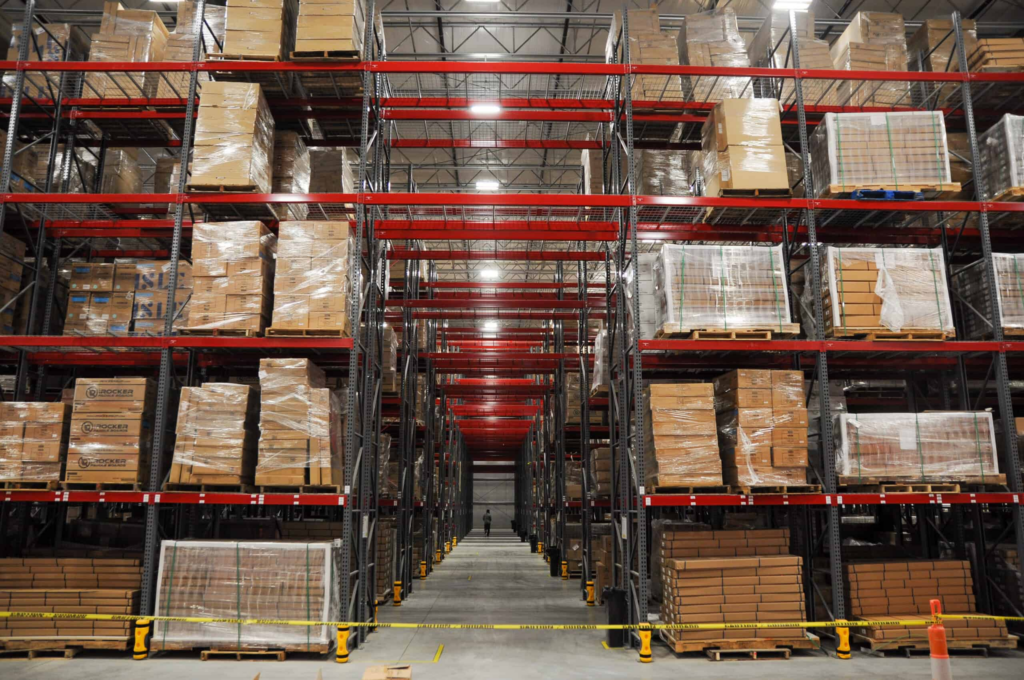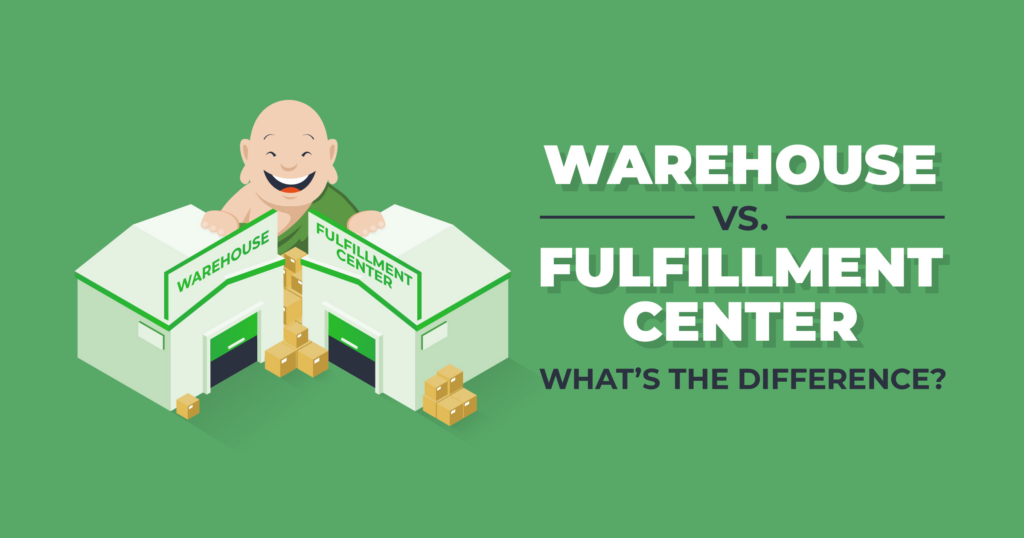
In today’s rapidly evolving business landscape, companies face unique challenges in efficiently managing their inventory and fulfilling customer orders. To meet these demands, the concept of a fulfillment center has emerged as a vital component of modern supply chain management. Fulfillment centers have revolutionized the way companies handle order fulfillment, creating a streamlined and customer-centric approach that distinguishes them from traditional warehouses. This article aims to provide a comprehensive understanding of what a fulfillment center is and how it differs from a warehouse.
What is a fulfillment center?

A fulfillment center is a specialized facility that plays a crucial role in the order fulfillment process for businesses, particularly in the realm of e-commerce. Unlike traditional warehouses that primarily focus on storing inventory, fulfillment centers are designed to handle various tasks involved in processing customer orders, ensuring efficient and timely delivery.
The primary function of a fulfillment center is to receive, store, pick, pack, and ship products to end customers on behalf of online retailers or businesses. When a customer places an order online, the fulfillment center is responsible for fulfilling that order by locating the products, preparing them for shipment, and arranging for their delivery.
How does a fulfillment center operate ?

Receiving and Inventory Management
The fulfillment center receives incoming shipments of products from suppliers or manufacturers. Upon arrival, the products are checked for accuracy, quantity, and quality. They are then assigned unique identifiers, such as barcodes or SKUs, to facilitate inventory tracking. The inventory is carefully organized and stored in designated areas within the fulfillment center.
Order Placement
When a customer places an order through an online platform, the order information is transmitted to the fulfillment center electronically. The order includes details such as the customer’s name, shipping address, and the specific products and quantities requested.
Order Processing
The fulfillment center’s system retrieves the order information and generates picking lists or work orders. These documents provide instructions to fulfillment center employees, specifying the location of the products within the facility. Depending on the size and layout of the center, picking can be done manually by employees or through automation technologies, such as conveyor belts, robots, or automated guided vehicles (AGVs).
Picking
Fulfillment center employees, often referred to as pickers, locate the products indicated on the picking lists or use handheld devices that provide guidance to the product locations. They gather the required items from their designated storage locations, ensuring accuracy and proper handling.
Packing
Once the products are picked, they move to the packing area. Here, the products are carefully packed into appropriate packaging materials, such as boxes, envelopes, or bubble mailers. Packing materials may include protective materials, product inserts, and promotional materials as required. The package is then sealed and labeled with the customer’s shipping address and any necessary tracking information.
Shipping and Logistics
The fulfillment center coordinates with shipping carriers, such as UPS, FedEx, or local postal services, to arrange for the transportation of the packages. The packages are handed over to the carrier for delivery to the customer’s designated address. The fulfillment center’s system generates shipping labels and tracking numbers that associate with each package for easy monitoring and order tracking.
Returns Processing
In case of customer returns or exchanges, the fulfillment center handles the reverse logistics process. Supplier or manufacturer return, restock products .
Benefits of using a fulfillment center

Utilizing a fulfillment center offers numerous benefits for businesses, especially those engaged in e-commerce.
Here are some key advantages of using a fulfillment center:
Efficient Order Fulfillment
They design and optimize it for fast and accurate order processing. They have streamlined processes in place, utilizing advanced technologies and automation to ensure efficient picking, packing, and shipping of individual customer orders. This leads to quicker order turnaround times, improved order accuracy, and enhanced customer satisfaction.
Scalability and Flexibility
Fulfillment centers provide scalability and flexibility to accommodate fluctuations in order volume. They can handle peak seasons, promotions, and sudden spikes in demand more effectively compared to in-house operations. Fulfillment centers have the infrastructure, resources, and manpower to quickly scale up or down based on business needs, allowing companies to focus on growth without worrying about order fulfillment constraints.
Cost Savings
Outsourcing order fulfillment to a fulfillment center can result in cost savings for businesses. By leveraging the fulfillment center’s resources, companies can avoid the costs associated with setting up and maintaining their own warehousing, inventory management systems, and shipping infrastructure. Additionally, fulfillment centers may benefit from economies of scale, which can lead to reduced shipping costs through negotiated carrier rates.
Focus on Core Competencies
By entrusting order fulfillment to a fulfillment center, businesses can free up valuable time and resources to concentrate on their core competencies. Instead of getting bog down in warehousing and order processing tasks, companies can focus on product development, marketing, customer service, and other strategic aspects of their operations. This allows for improved overall business efficiency and growth.
What are the differences between warehousing and fulfilment center?

Warehousing and fulfillment centers serve distinct functions within the supply chain, and their differences lie in their primary objectives and operational focus.
Here are the key differences between warehousing and fulfilment center
Purpose and Function:
Warehousing: The primary purpose of a warehouse is to provide storage space for goods. Warehouses are designed to efficiently store inventory for extended periods, often catering to wholesale distribution or replenishment needs. They focus on receiving, organizing, and preserving inventory until it is needed elsewhere in the supply chain.
Fulfillment Center: The main function of a fulfillment center is to handle order fulfillment processes. It goes beyond storage and includes inventory management, order processing, picking, packing, and shipping of individual customer orders. Fulfillment centers are optimized for speed and accuracy in fulfilling customer orders, aiming to deliver products quickly and efficiently.
Order Processing:
Warehousing: Warehouses typically handle bulk orders from manufacturers, suppliers, or other businesses. They focus on receiving large quantities of products, storing them, and fulfilling orders in larger quantities for distribution to retail locations or other businesses.
Fulfillment Center: Fulfillment centers handle individual customer orders placed through online platforms or other sales channels. They specialize in processing a large volume of individual orders, often with different products and shipping addresses. Fulfillment centers focus on efficient picking, packing, and shipping of individual items to end customers.
Inventory Management:
Warehousing: Warehouses prioritize effective inventory management, ensuring proper organization, storage, and preservation of products over longer periods. They often employ inventory control systems to track stock levels, monitor expiration dates (if applicable), and optimize space utilization.
Fulfillment Center: Fulfillment centers also manage inventory but with a different focus. They utilize inventory management systems to track real-time stock levels, ensuring availability for immediate order fulfillment. Inventory turnover is generally higher in fulfillment centers due to the fast-paced nature of individual order processing.
In summary, while both warehousing and fulfillment centers are integral parts of the supply chain, their differences lie in their core objectives and operational focus. Warehouses primarily focus on storage and wholesale distribution, while fulfillment centers specialize in order fulfillment, catering to individual customer orders with speed and accuracy.
Overall, a fulfillment center serves as a critical link in the supply chain, bridging the gap between online retailers and their customers. By efficiently managing inventory and processing orders, fulfillment centers contribute to enhancing the customer experience by ensuring prompt delivery, order accuracy, and operational efficiency.